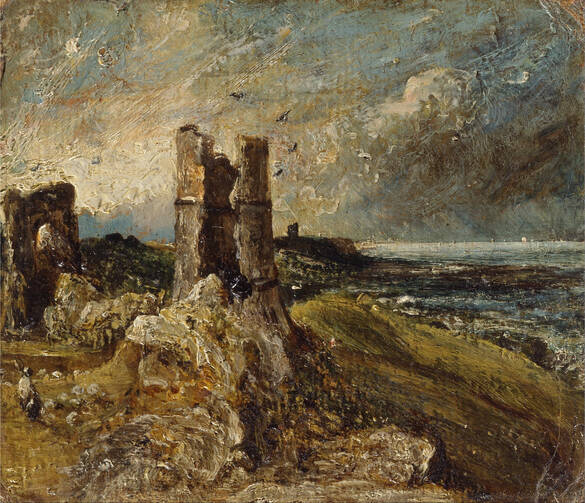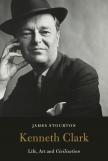Critic, curator, broadcaster and scoundrel: the man behind the epic documentary "Civilisation"
He was a great man. He was not a nice man, not even a good man. But then, greatness may not dwell that often with goodness and kindness in the same person.
Kenneth Clark was a great man, the most influential art historian of 20th-century Britain and the holder of many lofty posts in the worlds of culture and government: keeper of fine arts at the Ashmolean Museum, Oxford; director of the National Gallery, London; surveyor of the paintings owned by the royal family; chairman of the Arts Council of Britain; chairman of the Independent Television Authority; board member of the Royal Opera, the Royal Ballet and the National Theatre; and prolific author of books on art history. But he was best known as the creator of a 13-part television program he called “Civilisation: A Personal View.”
In this exemplary chronicle, James Stourton, former chairman of Sotheby’s U.K., tells this life story, bringing his own background in the arts as well as considerable scholarship and the full cooperation of Clark’s heirs to the task. The result is a substantial, definitive “Life,” organized chronologically in 39 chapters that move efficiently to an epilogue. Some of the story has been told before, in Meryle Secrest’s Kenneth Clark: A Biography (1984). Begun with Clark’s cooperation but published without authorization, that was a lesser achievement.
Clark came from an immensely wealthy family (an ancestor was the Clark who invented the spool for cotton thread). His father’s share from the sale of the family firm amounted to about $650 million in today’s currency. About his parents Clark wrote, “Many people were richer, but there can have been few idler.” His father drank and gambled, his mother vainly tried to reform his father. They had no intellectual or esthetic interests whatsoever. After Winchester and Oxford, where he took an undistinguished second-class degree (having spent more time looking at paintings, sculpture and drawings than attending lectures), Clark decided that his avocation would become his vocation. From that decision, and with a talent for cultivating his critical eye not only for works of art but also for gifted mentors (Bernard Berenson and Roger Fry among them), came the career that made him an internationally renowned art critic and scholar of enviable reputation. He could have led the aimless life of a wealthy playboy, but he did not; instead, inspired by the writings of the 19th-century art critic John Ruskin, he devoted time, energy and a considerable fortune to bringing art to a wider audience.
Though some might claim that Clark’s greatness lies in the significant accomplishment that was “Civilisation,” his role as director of the National Gallery during World War II may just overshadow that. He presided over an empty space, having arranged for the entire collection to be transferred to a Welsh mine for safekeeping, but at the suggestion of Dame Myra Hess, the renowned pianist, he organized a series of weekly concerts, believing that the works of Mozart and Beethoven gave substance to the culture for which Britain fought. In conjunction with his “Picture of the Month” (one painting, brought from Wales and put on display), the popular concerts boosted morale during the war and brought thousands of people into the gallery.
He was not a kind or good man. His relationships, both personal and professional, were tense and difficult: he was cold and distant from his children, colleagues and subordinates alike. He was an icy, imperial, impatient presence. He did not suffer fools or bores, titled or not, and took no pains to hide his disdain in their presence. His relationship with his wife Jane, after some early years of happiness, devolved into a tangle of tension and temper.
In the 1930s the Clarks were a chic and glamorous couple, entertaining aristocrats, politicians, writers and artists; Stourton calls them “a formidable combination.” Jane, a gracious and elegant hostess, set the stage for her husband’s performances. Later on, Jane’s drinking got out of hand. As Stourton makes clear, Clark’s infidelities began afterward, so it is unfair to say that his serial womanizing caused Jane’s problems (made them worse, perhaps). Jane’s behavior included bouts of verbal abuse, and as Stourton puts it, “she worshipped and tormented him in equal measure.” Jane also had extramarital affairs—one, for 10 years, with the composer William Walton. She became an increasingly frail and sad woman who carried a flask of alcohol and a nasal mist of morphine and cocaine.
It is to Clark’s credit that he stood by Jane as her public behavior became more erratic. He rescued her time and again from embarrassing situations at parties, and he never criticized her.
Kenneth Clark was a great man. He was not a nice man, not even a good man.
Still, Clark took up with many women, some for brief flings (a housemaid), others for longer interludes. Nearly all these “relationships” he characterized as amitiés amoureuses. He needed female attention and flattery, perhaps to compensate for what he felt had been his mother’s neglect. As his daughter Colette put it, “He was very put out if women did not fall in love with him.” More important than any sexual component was the attentive radiance shed on Clark by a vivacious woman.
Clark’s most disturbing womanizing involved Janet Stone, a married woman. Stone and Clark had a 30-year relationship, meeting on a regular basis and exchanging frequent letters in which Clark often declared his love. Yet after Jane’s death in 1976, when Stone evidently expected Clark to marry her, he instead hastily married Nolwen Rice, a French countess. In a letter written at the time, Clark assured Stone of his lasting love and of his new wife’s acceptance of that fact. But, as Stourton notes, “In this Clark was under a grotesque misapprehension.” Rice promptly and efficiently took charge.
Still, Stone clung to fantasy, hoping after the death of her husband in 1979 that Clark would leave Rice and marry her. Nothing doing. Perhaps the most damning aspect of this story and Clark’s greatest unkindness was revealed after his death, when his secretary found a box of Stone’s letters, not one ever opened or read.
Kenneth Clark knew and acknowledged that in his professional life he was a self promoter and a narcissist and in his personal life, a scoundrel. He himself told the story of an encounter at one of his clubs, when another member asked if he were “Kenneth Clark the baronet.” When Clark said “No,” the other fellow responded, “Good—the other one’s a frightful s***.” Clark agreed, commenting that it was “good to hear the truth occasionally.”
The excellence of Stourton’s biography manifests itself not only in his fine scholarship and attention to detail but also in his fair assessments of problematic areas. In evaluating “Civilisation,” Stourton underscores Clark’s singular achievement but does not ignore its flaws (for example, his deletion of female roles, except for the Virgin Mary; his over-reliance on Carlyle’s great-man theory of history; his ignoring Spain). In charting Clark’s extramarital antics, Stourton sets things out, but he makes no judgments; he does not have to, as the evidence speaks for itself and diminishes our estimate of Clark. And in telling of what may have been Clark’s deathbed reception of the sacraments, he gracefully concludes, “Probably Clark felt that it was correct to leave the world in a sacramental way—a rite of passage to counterbalance baptism.”
Kenneth Clark was a great man. He was not a nice man, not even a good man. James Stourton has revealed him with human fullness. In depicting the man who was Kenneth Clark—an elitist and a socialist; an unbeliever and a man of spiritual vulnerability; a devoted husband and a serial womanizer; an ivory-tower scholar and a marketplace popularizer; a man of refined taste and a hoarder of Mars bars; a charmer and a cad—James Stourton has illuminated an enigmatic, paradoxical man. As a character in one of Muriel Spark’s novels opines, a paradox is not a problem to be solved, but something you live with. Clark knew that, Stourton knows that, and so do we...now.
This article also appeared in print, under the headline “Critic, curator, broadcaster and scoundrel,” in the April 17, 2017, issue.











